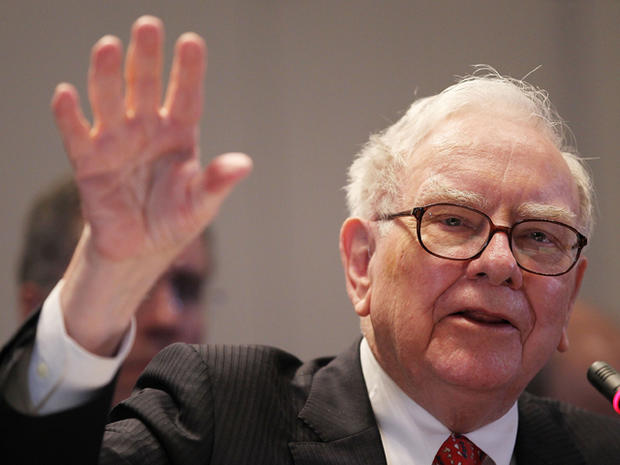How to swing a deal like Warren Buffett
(MoneyWatch) Warren Buffett looks at many deals. Some he likes and pursues; when he finds one he loves, he strikes fast.
Buffett once wrote about the types of deals he pursues by making an analogy to a baseball player who ranks with Babe Ruth as the greatest hitter of all time.
"We try to exert a Ted Williams kind of discipline," the billionaire investor said. "In his book 'The Science of Hitting,' Ted explained that he carved the strike zone into 77 cells, each the size of a baseball. Swinging only at balls in his 'best' cell, he knew, would allow him to hit .400; reaching for balls in his 'worst' spot, the low outside corner of the strike zone, would reduce him to .230. In other words, waiting for the fat pitch would be a trip to the Hall of Fame; swinging indiscriminately would mean a ticket to the minors."
Is that prospective customer a black hole?
In sales, nothing beats ruthless preparation
Pictures: Body language -- 23 must-know moves
When Buffett swung for the fences on a deal to buy North America's second-biggest railroad in 2009, he called it an "all-in wager" on the U.S. economy. Today's Burlington Northern Santa Fe is the product of nearly 400 different railroad lines that merged or were acquired over the course of 160 years. When Buffett goes big, in short, he goes huge. BNSF operates in 28 states and two Canadian provinces. The bet paid off when BNSF this year became the busiest railroad in the U.S. by traffic.
But for every BNSF deal, there are countless others involving major companies that Buffett has walked away from. In my upcoming book "How to Close a Deal Like Warren Buffett," I warn about chasing what I call "logo" companies. That rarely works.
Going after marquee companies, including giants such as Wal-Mart (WMT), General Electric (GE) and UPS (UPS), instead of big deals can be a recipe for disaster. So while it's tempting to take a big cut on a deal that no doubt would elicit admiring glances from coworkers and competitors alike, always go after the deal, instead.
I was involved in hunting a logo company once where we went to meeting after meeting trying to see the buying authority. After we had spent days and weeks visiting with them and meeting this person and that person, we discovered that their buying cycle was about 26 months. We were only four months into it and still hadn't met a single person who could make a buying decision.
And if a buying decision was made in 26 months, how long do you think it would be before we cashed our first check from this deal? I don't know about you, but we simply couldn't afford the luxury of pursuing the deal any further.
The buying cycles of logo companies are beyond patience, reason or resources. They'll bleed you dry, if you let them. We are reasonably sure none of this is intentional. But logo companies are, by definition, huge. And with huge come many complications.
Logo companies have layer upon layer of people who seem to be involved in a buying decision. The first layer is responsible for generally vetting you and your offerings, including reviewing your company's history, stability and reputation. The second layer gets into more detailed conversations with you about your plans for solving their problems. But have you met an actual prospect yet? No. And you don't know how many more layers you have to penetrate before you do.
So far, in such a relationship, you're just giving free consulting. You have no promise that this deal will ever go anywhere. And if you continue to allow yourself to spend inordinate amounts of time preparing reports, collecting data and posing -- and solving -- hypothetical situations, you're a fool. And fools don't make big deals like Buffett.
